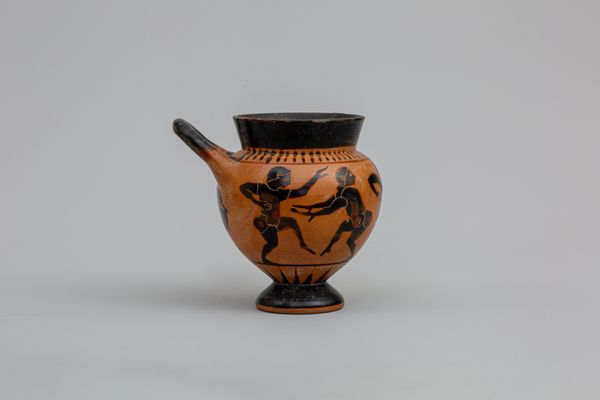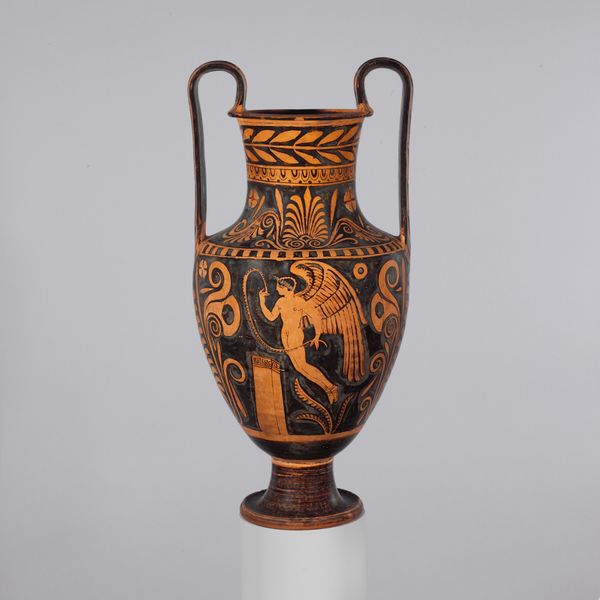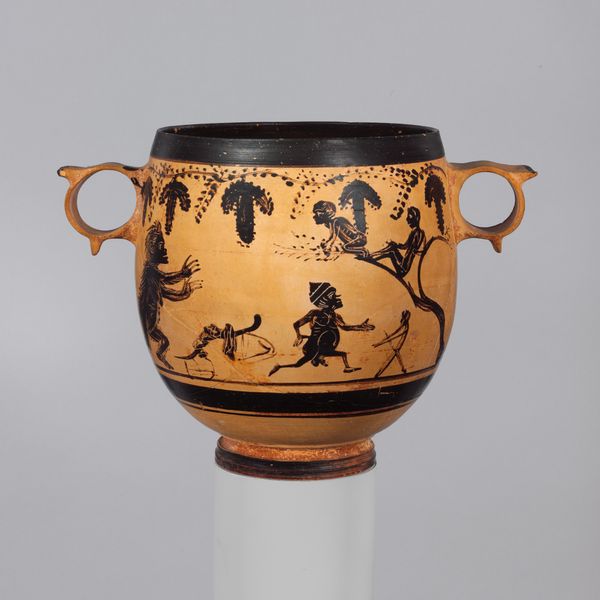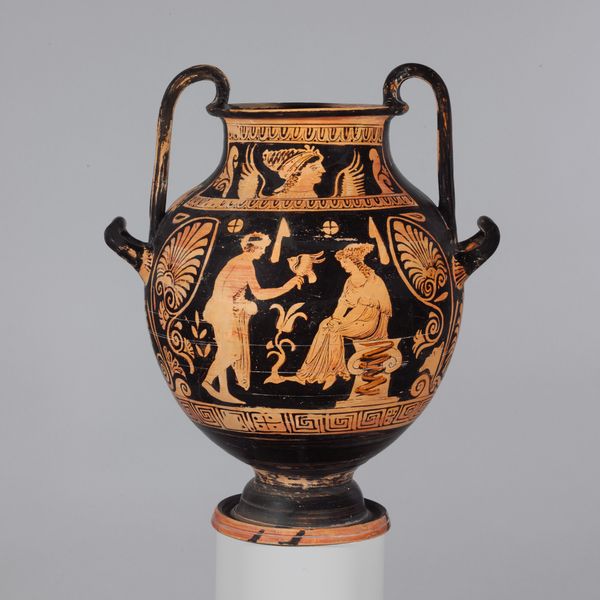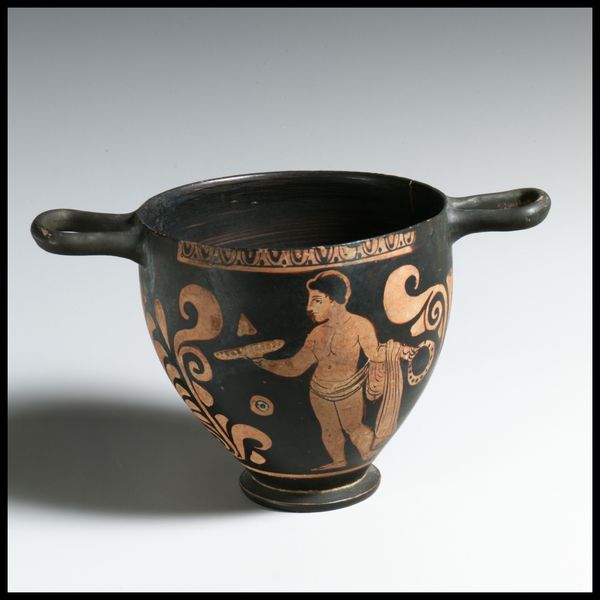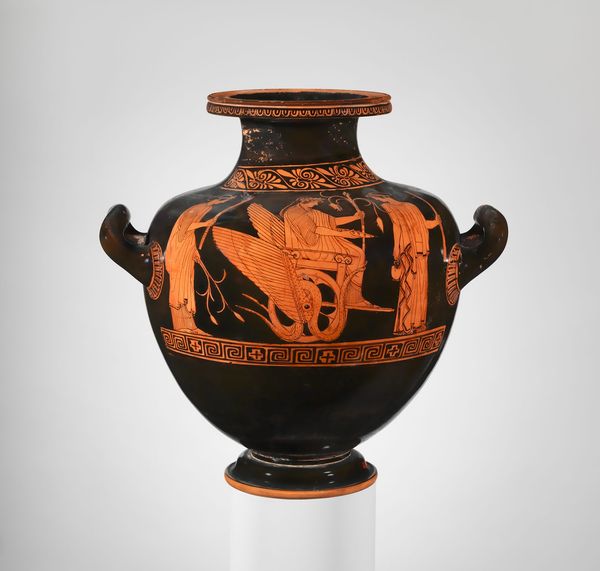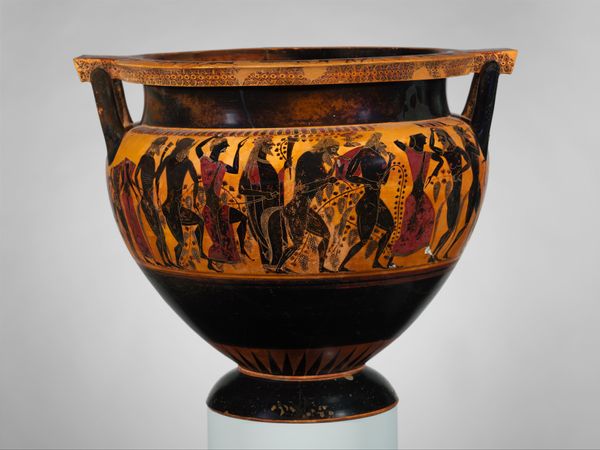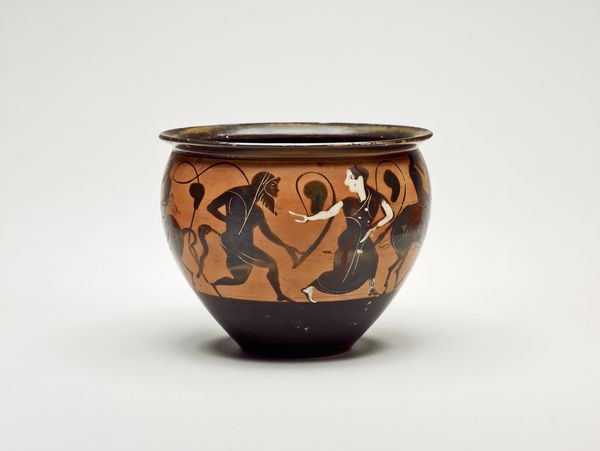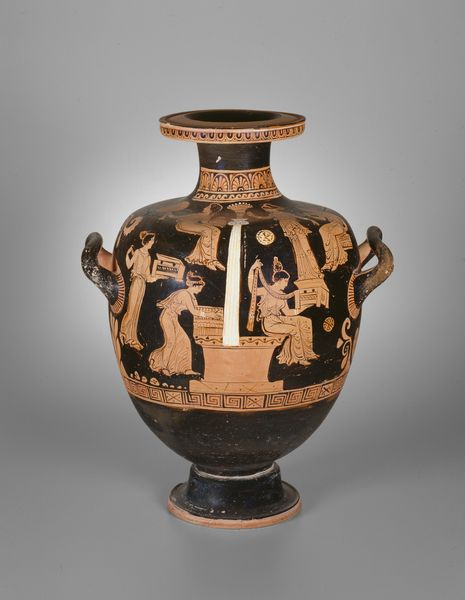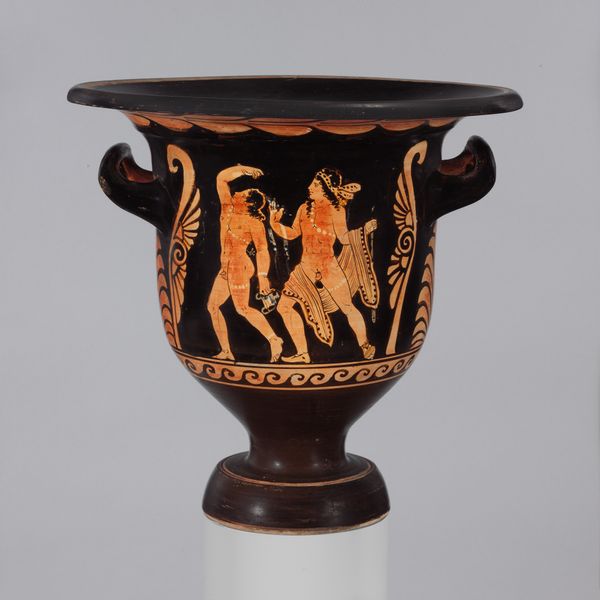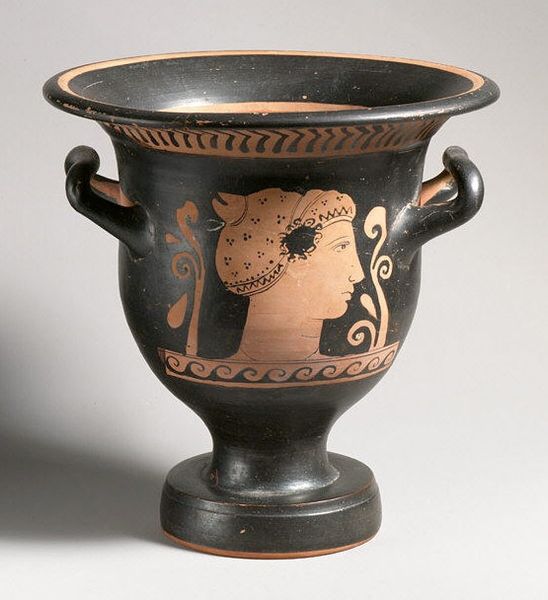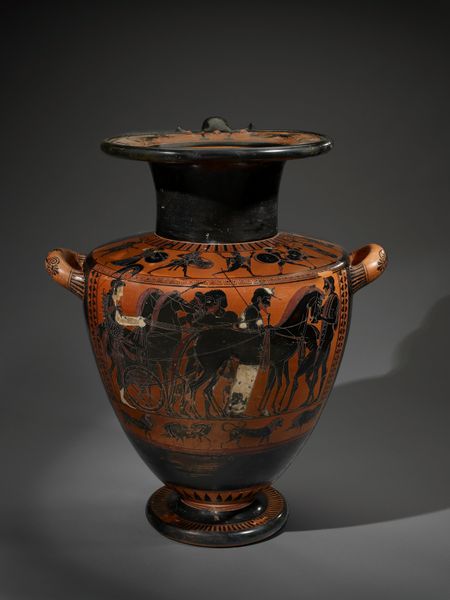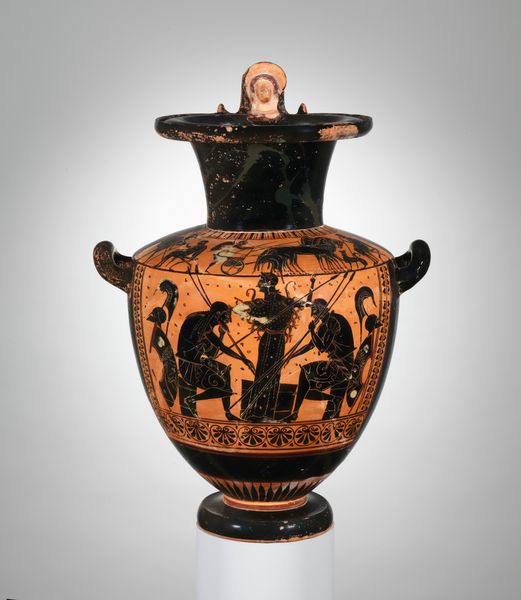
drawing, ceramic, ink
#
drawing
#
greek-and-roman-art
#
ceramic
#
figuration
#
vessel
#
ink
Dimensions: 9.2 × 10.8 × 10.8 cm (3 5/8 × 4 1/4 × 4 1/4 in.)
Copyright: Public Domain
Curator: This ancient artifact, known as Mastoid, or Drinking Cup, dates back to approximately 500 BCE. Its current home is here at the Art Institute of Chicago. The piece is constructed of ceramic and decorated with ink drawings depicting figures. Editor: It's strikingly minimalist at first glance – the dark figures against the reddish clay feel both primitive and sophisticated. I’m immediately curious about the social functions that were wrapped up in such material creations. Curator: Considering its age and function, let’s think about the socio-economic status associated with owning such a crafted object. A drinking cup like this wasn't merely functional; it was a display of affluence, shaped by both its utility and artistic value. Editor: Exactly, so how were these objects produced? Were specialized workshops responsible? Who were the artisans shaping these drinking rituals, literally? Were these men? Were they enslaved peoples? The means of production are deeply rooted in questions of social power. Curator: The labor aspect is important. These specialized ceramic workshops likely consisted of skilled artisans. The creation process of the Mastoid involved labor beyond just its production; acquiring the raw materials and the trade routes needed for distribution, point towards well-organized systems of economic exchange. Editor: Yes, the figures themselves also spark questions related to gender roles, class, and power structures in their depictions. Curator: Definitely. And think about what they are consuming when they are using it, what stories and ideas this would give to these groups as they communally drank with one another and shared these ideas within society. Editor: Viewing the Mastoid beyond its aesthetics brings forth rich questions. It transforms this vessel into an artifact pulsating with potential historical insights. Curator: It highlights the complexity of ancient Greek society—its aesthetics, production processes, labor practices, and material wealth. Editor: Precisely, and situates objects within an entangled web of histories, power dynamics, and labor—rendering the material world far from mute.
Comments
No comments
Be the first to comment and join the conversation on the ultimate creative platform.
